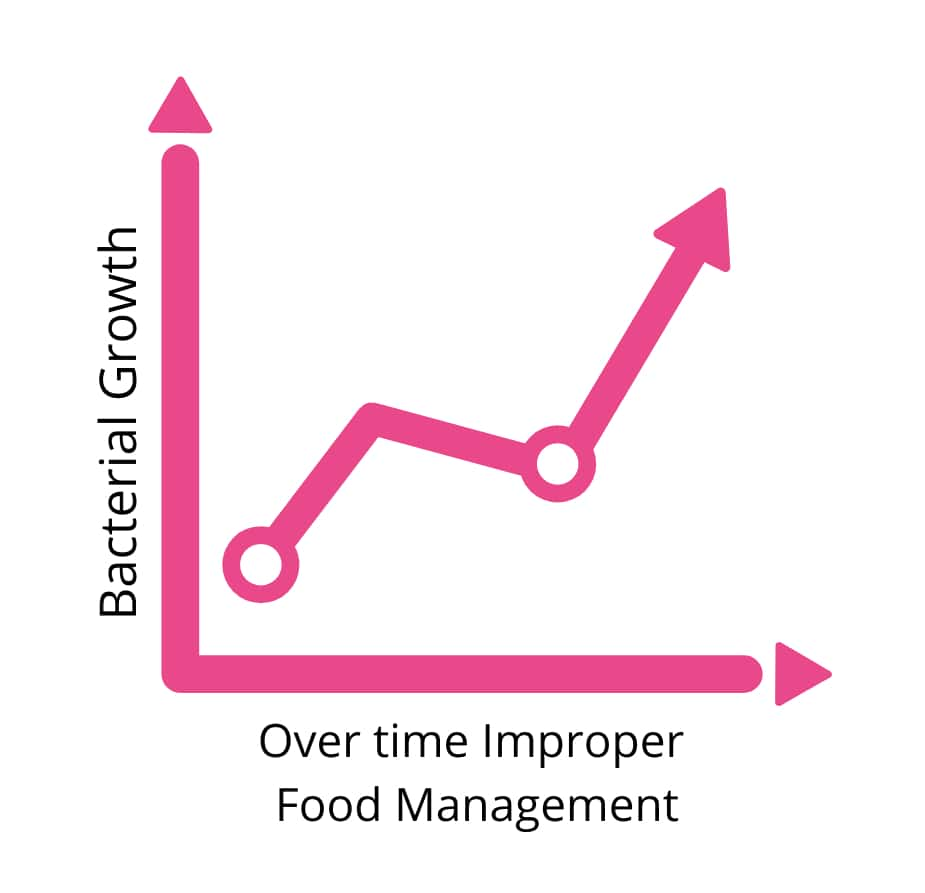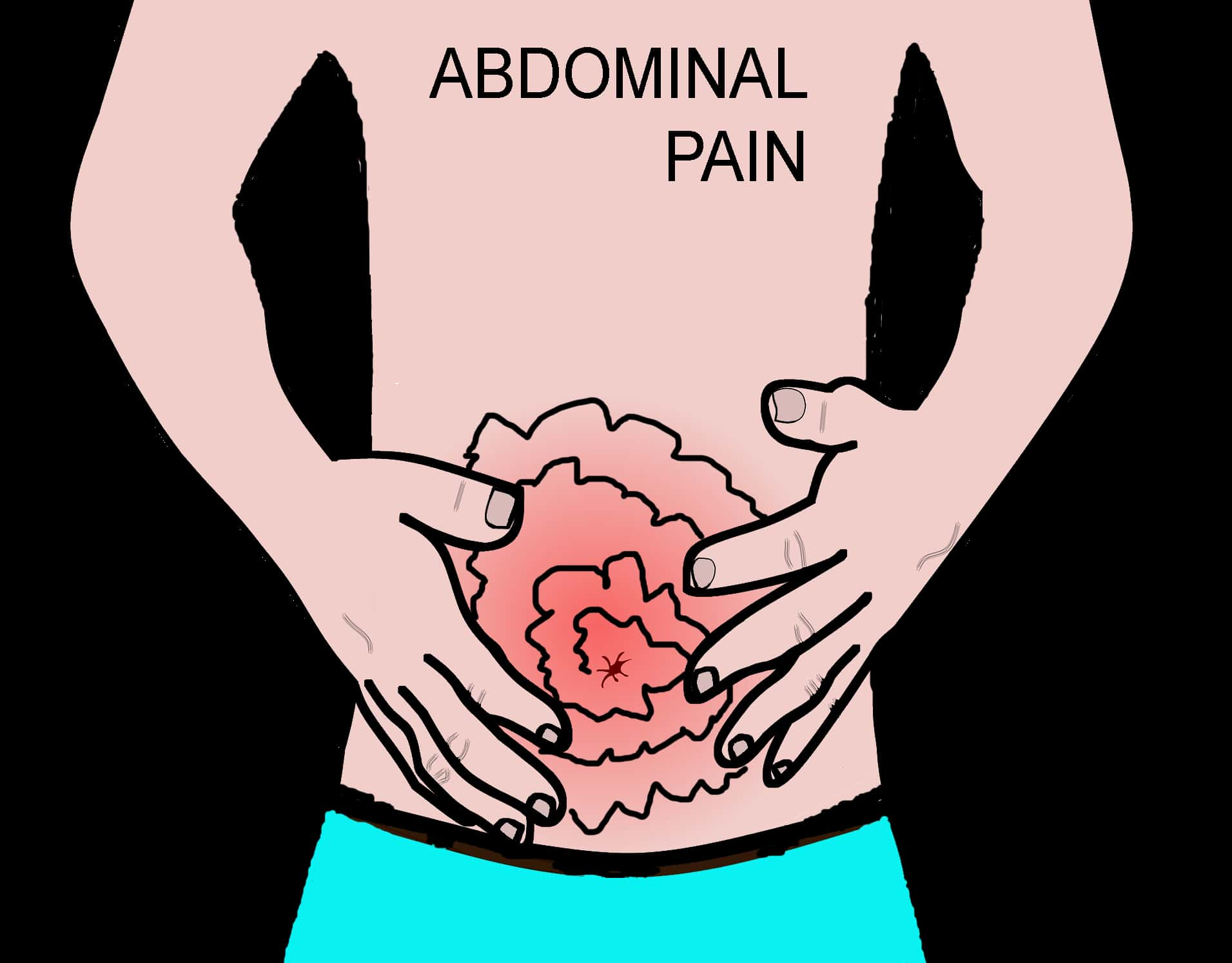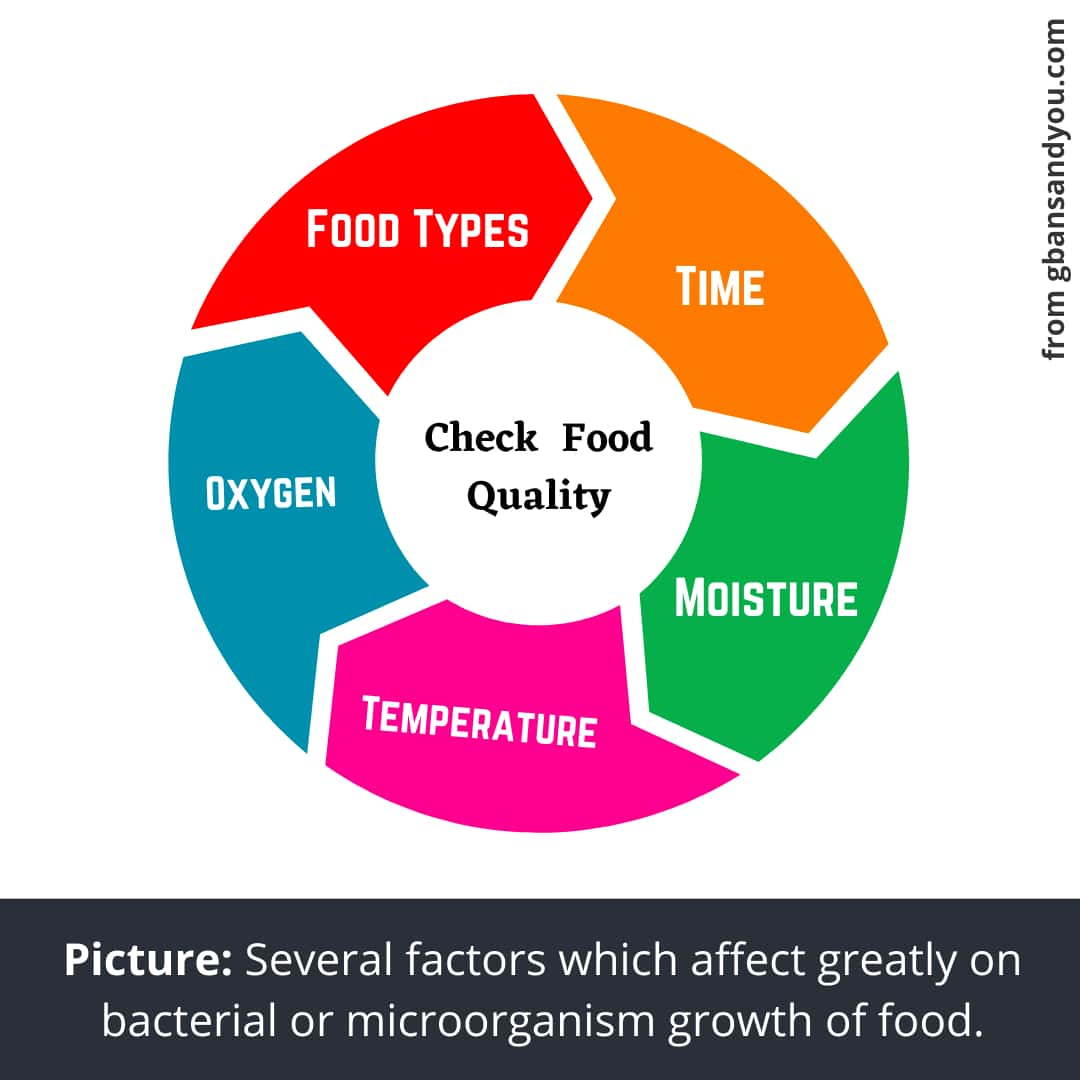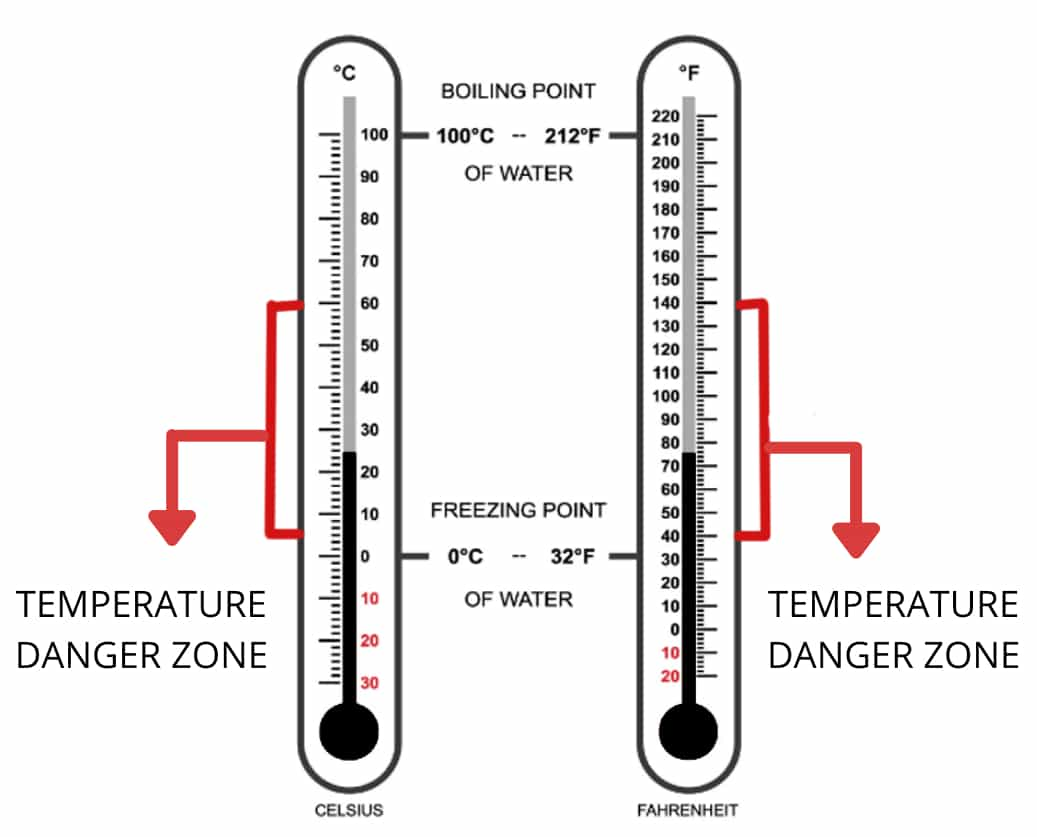Hello YouArmy,
Good Morning,
So you here! Most probably the reason will be either you having a bad experience of food-poisoning 🙁 or just want to know! The last one assuming suits to you. 😀
However, whatever the reason is, hope you’re well! 😀 So the question is: What is the best way to limit the growth of bacteria in food? But before you know the answer, you should know something about called BACTERIA! Here we go …

What need bacteria to live and grow?
Like a human being cell, bacteria also multiply and grow in one to two, two to four, four to eight, …. the journey continues. But they didn’t grow by chewing normal veggies, meat etc. 🙄 Instead, they depend on the host’s nutrients for example – human!! (So poor creature!)
In how much speed bacteria grow?
In proper temperature, moisture, time, acidity, salt; bacteria grows in rocket speed. Under optimal conditions, many types of bacterias like E Coli. can double in every 20 minutes [Cite]. Approximately, on avg. one bacteria can multiply to more than 30,000 in 5 hours and 16 million in just 8 hours! Now think about how they grow with lightning speed!!!!

Sources of Bacteria? or, How bacteria spread?
To be frank, They exist everywhere in the environment – air, water, soil. Good hygiene practices along with fresh food reduce the chance of bacteria to be grown. Now, let’s look at some examples below of sources of bacteria –
- They can naturally present on the food.
- Contamination of the food processing facility can boost their spread.
- At the time of cross-contamination! For instance, when you touch contaminated food or your hand already infected with them. Then, bacteria transferred from one food to another by your touches.
- Dirty food handling equipment or poor hygienic system.
Spores – The ultimate protection of bacteria!
Some bacteria can form spores. Now you will ask what the thing it is? That said, it’s the ultimate defensive mechanism of them. When they face hostile surroundings such as high heat, acid or other chemicals that can kill, they produce spores.
Spores are highly resistant to hostile environments mentioned before. They don’t grow or come out from that spore until they get favourable conditions again. These spores are seen in bacterias like Clostridium botulinum, Bacillus Cereus etc.
[There is an excellent explanation/research How spores are formed and how bacteria defend through it? on Wiki, NCBI, Cornell CALS]
What causes the growth of bacteria in food?
Improper Cooling
Many people think properly cooked food kill pathogenic bacteria fully. Hence, they assume it to be safe to eat. But in some cases, they shouldn’t be!!
So, the question: cooking food at 100ºC doesn’t kill all bacterias? Well, the answer is nope! Some bacteria are still alive even at cooking temperature or more. But Howwwww??????
Well, they make heat-sensitive spore when felt high temperature. Thus, it keeps them survive and when again get suitable environment they started getting multiplies.
That’s why proper cooling is important. There are techniques to do it – First, 1-2 mins after cooking, the food temperature must bring down from at 60ºC/140F to 20ºC/70F in first 2 hours or less. Then in the next 4 hours, it should be down from 20ºC to 4ºC.
Food Management
Without proper food management, good cooking food can also bring health hazards. The following may cause food poisoning when food is –
- Left outside for a longer time at room temperature.
- Not heated or cooled at the right temperature.
- Brought in and out in Temperature Danger Zone (TDZ) too many times.
- Handled by the hand of Infected Person having illness like diarrhoea, hand infections, fever, vomiting etc. From this person’s hand many dangerous pathogens such as E. coli, Salmonella can easily be transferred to the food. And these are enough to make a person sick with having abdominal pain.

Now how can you fight against? Means, what’s the procedure to make the food safe?
- After cooking, never keep the food at room temperature or outside. Because it attracts bacteria. Rather, preserve it as per food-types out of 4ºC to 60ºC temp. in refrigerator or micro-oven.
- Don’t reheat the leftovers more than once. If it falls in TDZ for too many times, try to avoid it fully. Furthermore, if you’re preserving food at the right temp, try to eat it within three days. Because within these days most food holds its freshness and healthiness.
- After using the toilet, washroom, blowing the nose or doing such things make sure you or food handlers washed hands properly.
- Infected cuts on hands or arms (including sores, burns, wounds, etc.) must not handle food unless the cuts are properly covered.
Worried too much for your hygiene? Try this …
Raw Food from Unverified Sources
Unprocessed or unsourced raw foods habitat for pathogenic bacterias. Eating raw foods like Eggs, Red Meat, Oysters, Sushi should avoid. But still, if you’re trying to eat those make sure –
- Buying foods from verified or approved suppliers. As most food contamination or poisoning starts eating from unreliable suppliers. On the other hand, verifiers are strictly inspected for cleanliness or food safety by govt. figures.
- Just to fit pocket, you don’t eating the cheaper version of food from unhealthy places or persons.
Which factors greatly impact on bacterial growth of food?
There are several factors which affect greatly on bacterial or microorganism growth of food. Let’s look at those most common factors –

Food-Types: Types of food greatly impact on the micro-organism. For example, Protein-Rich Foods like meat, fish etc. are the most valuable friendly source for bacteria to grow.
On the other hand, acidic foods/ingredients like vinegar, lemon etc. are the enemy for them. They grow very slowly or even killed on these foods. That’s why these used as preservatives.
Food-Temperature: As per many sources [Cite – 1, 2, 3], from 4ºC/40F to 60ºC/140F temperature called danger zone. In this temperature, bacterias grow rapidly. So you should check whether the food is in the right temp.

Oxygen: There two types of bacterias – I. Aerobic Bacteria (requires oxygen to grow) II. Anaerobic Bacteria (require no oxygen). But most of them are aerobic [Cite]. Now think what may happen when you place your food in open air or oxygen!!!
Time: As time goes on, the food becomes unhealthy. Because as time passes, bacteria multiply in 2X, 3X to the time!
Moisture Environment: Bacteria need moisture environment to survive and grow. For this, many foods preserved in dry.
How can you limit the growth of bacteria in food? or, How food can be preserved longer?
Well, different food needs different methods to preserve. Still, here discussing some common and best methods:

Keep the food at the right temperature:
Keeping the food at the right temperature slows down the growth of bacteria or even it kills them. As said earlier never keep the food in TEMPERATURE DANGER ZONE (4ºC/40 F to 60ºC/140 F). You should keep the food out of this zone/temperature.
So, consequently as per foods, keep it either in 4ºC or less temperature or, in 60ºC or higher temperature. Most importantly, Putting foods in the refrigerator/micro oven, you should always check if it is at the right temperature. As sometimes the internal temp. changes over time.
Keep your food out of oxygen:
Most bacterias live when they get food and oxygen. Though exception is there, like Clostridium, Botulinum toxin, Bacteroides can live without oxygen. But still keeping the food without the touch of oxygen can drastically save you from most bacterias. Well, how will you do that?
You can preserve the food into a sealed can which will keep your food away from oxygen as well as bacterias. Or, for some fried foods like potato chips can be kept in watertight bags.
Fun fact: For this, you will see most chips company’s chips packets kept oxygen-free. And to ensure it more, they fill the chips packet with nitrogen gas.
Keep the food moisture-free:
Moisture is the most trusted friend of bacterias. Their growth multiplies in a moisture environment. That’s why try to preserve the food as dry as where possible. Many types of fishes like Hilsha, Carp, Catfish, Cod, Tuna preserved dry in many countries.
Keep your smart ideas for different foods:
How does preservation work for different foods? The answer won’t be possible for anyone to give. That’s why you have to use your own brain at how some certain food stays best at their condition.
For example, full or whole onion stay longer than cut or peeled one. Likewise, the Boiled egg stay best than a peeled boiled egg.
Other Methods:
Use excess salt or excess sugar to limit microbial growth. Make pickle of fruits to keep eating for a long time even in the offseason. Like cucumber, mango, pineapple pickle. Besides, Pasteurisation, Preservatives, fermentation such methods useful to limit the bacterial growth in foods.
Make your cleanliness is your first priority
In Conclusion, Which types of Food you should take extra care?
Any animal protein source food like meat, milk, fish, egg; any heated or cooked veggies, starch (rice, potato, bread, pasta etc.); you should take extra care of. Because these foods drastically spoiled when kept at room temperature.
You will say now, so what’s left?? Well, 😆 😆 😆 😆 NOTHING! We just said you should take extra care means either you have to eat this within 2 hours [Cite] after cooking. Or, Keep the food out of TEMPERATURE DANGER ZONE. That’s it!
And to remember you again, always try to avoid raw foods as they’re most vulnerable to pathogens.
So, Hope you enjoyed this post and got the important info about food-poisoning reason and remedies. Thanks for reading! See you soon 😉
FAQs
Q: How food poisoning is treated?
A: Usually food poisoning resolves without any medical attention. In most scenarios, recovery happens within 3-5 days. But yes in worse cases, you may have to face hospital. However, the treatment of it is to reduce dehydration. Besides, It’s also to rest and replace lost fluids and electrolytes. So, you can treat yourself at home by –
- Drinking plenty of liquids with Oral Rehydration Salts (ORS) to replace lost electrolytes.
- Avoiding rich foods like fatty, sugary, or spicy foods, dairy products, caffeine, and alcohol.
- Drinking fruit juice and coconut water for faster recovery. It can restore carbohydrates and eliminate tiredness.
- Ensuring fluid intake even if vomiting continues.
- Gradually starting to eat again with blander nutrient food (grain, rice, toast, bananas etc).
- Lastly, take a test! 😀
In severe cases of food poisoning, you may have to seek after doctor. Otherwise, may require hydration by salts and electrolytes via vein at a hospital.
Q: In which temperature food should not be preserved?
A: From 4ºC/40F to 60ºC/140F temperature, food shouldn’t be preserved.
Q: Is food poisoning a virus? or, Can food poisoning be caused by a virus?
A: Generally, food poisoning caused by pathogenic bacterias or parasites. But yes! it can also be caused by viruses like norovirus (most common), Sapovirus, Rotavirus etc. Unhygienic environment, Unprocessed dairy products, seafood can cause food poisoning. So be neat and clean!
Q: Can food poisoning cause dizziness?
A: As said earlier, food poisoning may turn over to vomiting. And when it happens in excessive, food poisoning cause dizziness.
Q: Is food poisoning contagious?
A: Food poisoning is the result of chemicals or toxins found in the food and not contagious. Unless –
- You eat foods like raw meat, seafood or sushi already contaminated with bacteria, virus, or fungus.
- You touched that surface which someone with the infection has touched.
A: Symptoms of food poisoning start after 6 – 24 hours, taking of contaminated food. In General, Symptoms of it come with Diarrhea, stomach cramping, vomiting etc. It lasts for less than 24 hours. But in worst cases for a sicker older or child, the date of recovery can’t be said.
Related:
- The Ultimate 12 Health Benefits of Mint Tea!!!
- Amazing Cashew Nuts Health Benefits, enough to make your day!
- Sea Moss: THE NEXT GENERATION of FOOD
- Are tacos bad for you? | Really are tacos healthy? | Tacos Review
- What is Group Life Insurance? | Group Life Insurance Definition
- What are the group health insurance benefits?
See Also:
- Carolina Reaper – The Hottest pepper in the world!
- Danyang-Kunshan Grand Bridge – Longest Bridge in the world
- Kingda Ka – The Tallest Roller Coaster in the world 2021!
- Why Roads are Black in Colour, why aren’t they white?
- How does a matchstick catch fire? | The science behind it
- What is pneumonoultramicroscopicsilicovolcanoconiosis?



